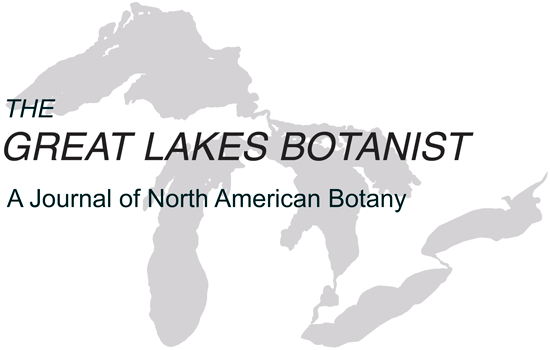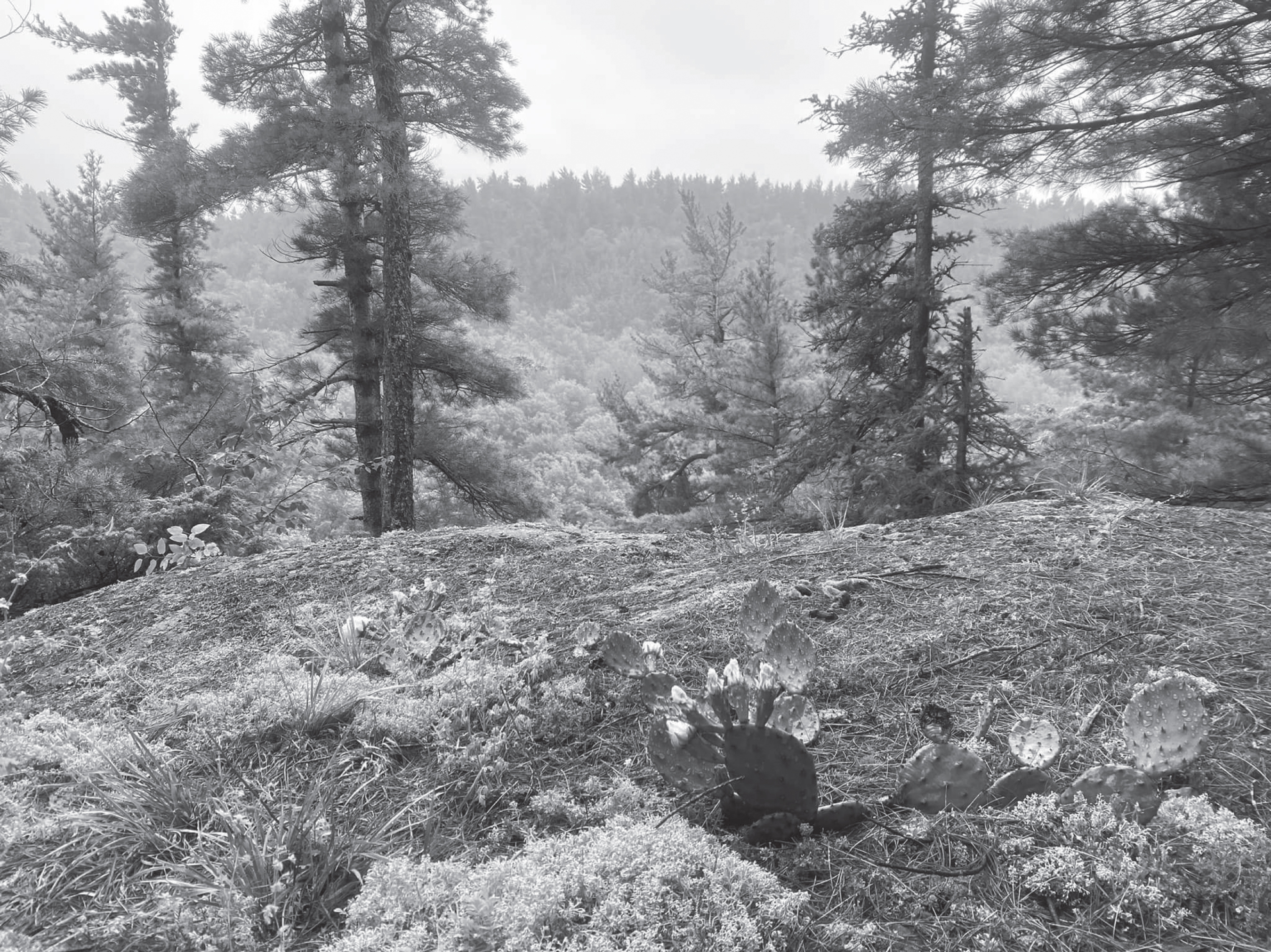The Great Lakes region harbors disjunct species from various floristic affinities including western cordilleran, Gulf Coast and Atlantic coastal plain, and the Central North American prairie. The northern Great Lakes region is well known for harboring populations of western cordilleran disjuncts (Marquis and Voss 1981; Drummond et al. 2022), and several hypotheses have been proposed as to how they were able to migrate to the region. Eastward migration during a cooler and moister postglacial period appears most likely. Coastal plain disjuncts may have arrived from the Atlantic and Gulf coasts by making short and moderate distance migrations along post-glacial wetlands (Reznicek 1994). Prairie species expanded eastwards from central North America during a post-glacial warm and dry period and became stranded when conditions changed, resulting in disjunct populations (Manogaran 1983; Reznicek and Maycock 1983). Southern, or “Carolinian,” plants are less documented as disjuncts in the northern Great Lakes region. While well represented in the southern Great Lakes region, most regional species with southern affinities have a roughly continuous distribution to the south which is likely due to the continuity of suitable habitat. However, the complex terrain in the Huron Mountains in the western Upper Peninsula of Michigan may allow for enough climatic variation at a fine scale to support populations of species outside their normal ranges.
This article reports the first collection of Nutallanthus canadensis (L.) D.A.Sutton (Plantaginaceae) and Opuntia cespitosa Raf. (Cactaceae) from the Lake Superior drainage basin, and both appear to be the northernmost occur-rences of these species in eastern North America.
Dry, open, sandy or rocky ground, jack pine plains and the beds of dried lakes have been noted as habitats for Nutallanthus canadensis in Michigan. Sandy fields, open oak forests, stabilized open dunes and disturbed ground along roadsides have been listed as habitats for Opuntia cespitosa in Michigan (MICHIGAN FLORA ONLINE 2011). Both species have broad distributions further south in eastern North America.
A population of Nutallanthus canadensis was discovered at the summit of Trout Mountain in the northern Huron Mountains on June 18, 2022 (Figure 1). Fifty plants, nearly all of them in flower, were observed in a granite bedrock glade in openings and under a filtered canopy of Quercus rubra. The site was south-facing and on top of a fairly steep ledge. Other plants noted include Arctostaphylos uva-ursi (L.) Spreng., Melampyrum lineare Desr., Acer rubrum L., Woodsia ilvensis (L.) R. Br., Carex pensylvanica Lam., and Vaccinium myrtilloides Michx. A moss, Hedwigia ciliata (Hedw.) P. Beauv., was also present. An additional ten plants were seen at Mount Ives, 2.8 km to the east on June 19, 2022, and seven were observed at the summit of Breakfast Roll, 5.1 km to the east of the original site on June 20, 2022. Both the Mount Ives and the Breakfast Roll populations were in open locations in shallow soil with similar flora and site characteristics (Table 1).
Habitat characteristics for the three populations of Nutallanthus canadensis in the northern Huron Mountains. The values given are mean values recorded in 12 one-meter square plots along 100-meter transects recorded in September 2022.
| Site | Elevation (m) | Canopy Cover (%) | Vascular Plant Coverage (%) | Exposed Bedrock (%) | Distance to Lake Superior (km) | Slope Azimuth | Aspect |
|---|---|---|---|---|---|---|---|
| Trout Mountain | 391 | 25 | 25 | 38 | 3.2 | 18 | 170 |
| Mount Ives | 331 | 24 | 10 | 68 | 3.5 | 15 | 200 |
| Breakfast Roll | 354 | 9 | 31 | 47 | 3.9 | 5 | 180 |
Opuntia cespitosa was found on a small (10´14 m) south-facing glade on the north side of the Little Garlic River in the central Huron Mountains at 418 m elevation (Figure 2). Plants were found in small pockets of soil and on bare meta-morphic rock of mostly mafic composition on August 1, 2022, on an overcast raining morning with an air temperature of 16°C. A total of six plants were found, one patch occupied about four square meters, and another occupied two square meters. Two fresh blooms and fifteen spent flowers were observed along with a single bud. No developing fruits were found, and no pollinators were present. The glade, which contained a few small openings, occurred along a ridge that trended east-west and was mostly dominated by Pinus strobus L. The plants occurred under a filtered canopy, about 70% open. Other plants included Vaccinium angustifolium Aiton, Diervilla lonicera Mill., Dicanthelium xanthophyllum, Capnoides sempervirens (L.) Borkh., Hieracium piloselloides Vill., Quercus rubra L., Juniperus communis L., Danthonia spicata (L.) Roem. & Schult., and Amelanchier sp. The open patches of rock were lichen-dominated, including the following species: Stereocaulon saxatile H. Magn., Cladonia mitis Sandst., Cladonia rangiferina (L.) F. H. Wigg., Cladonia turgida Ehrh. Ex Hoffm., Cladonia gracilis (L.) Willd., Lepraria neglecta (Nyl.) Erichsen, Diploschistes scruposus (Schreber) Norman, Umbilicaria deusta (L.) Baumg., Acarospora fuscata B. de Lesd. and Porpidia sp. One moss species, Polytrichum juniperum Hedw., was noted.
The nearest record of Nutallanthus canadensis is 120 km to the south along the Menominee River on the Michigan/Wisconsin border and the closest continuous populations are 300 km SW in central Wisconsin along the Wisconsin River and 300 km SE in the northwestern Lower Peninsula of Michigan. The nearest apparently natural populations of Opuntia cespitosa are in the west-central Lower Peninsula of Michigan (370 km SSE) and from south-central Wisconsin (400 km SSW). (GBIF 2023; MICHIGAN FLORA ONLINE 2011). This is the first time Opuntia cespitosa has been collected in the Upper Peninsula of Michigan and the first reported collection from a rock outcrop in Michigan.
While the origin of these southern disjuncts cannot be known with certainty, natural colonization during the post-glacial hypsithermal warm period ca. 5,000 years BP is the most likely origin. The warm, dry conditions during the hypsithermal are known to have allowed for the northward and eastward colonization of many species and suitable local conditions allowed persistence of populations as the climate cooled (Reznicek and Maycock 1983; Strong and Hills 2003; Hamilton and Eckert 2007). The local conditions on granite bedrock glades in the Huron Mountains are warmer than the surroundings, which may allow the persistence of species that are otherwise poorly suited to the regional climate in the Lake Superior region (Table 2).
Ground surface temperature metrics for granite bedrock glades (n=2) and the surrounding forest (within 50 meters of the glade edge) (n=4) from May 7 to September 14, 2021, recorded with HOBO™ data loggers. All the loggers were placed directly on the ground.
| Temperature Metrics | Glade | Matrix |
|---|---|---|
| Mean Max °C | 52 | 32 |
| Mean Min °C | 0 | 1 |
| Mean °C | 23.4 | 17.8 |
| Hours above 30 °C | 750 | 7.8 |
Specimen Citations
Opuntia cespitosa: MICHIGAN. Marquette County. 46.64256 -87.64070. August 1, 2022. Ryne D. Rutherford 200 (MICH), 201 (FLAS).
Nutallanthus canadensis: MICHIGAN. Marquette County. 46.86539 -87.88969. August 1, 2022. Ryne D. Rutherford 202 (MICH).
Acknowledgments
Many thanks to Kerry Woods, and the Huron Mountain Wildlife Foundation, my advisor David Flaspohler, and Michigan Technological University for supporting this research. Thanks to Susan Fawcett for excellent work at specimen preparation. Many thanks to Michael Huft for his timely and thoughtful edits of this manuscript.
Literature Cited
Drummond, C. P., Cochrane, T. S. and Sytsma, K. J. (2022). Western North American plants disjunct in the Great Lakes region: 40 years after Marquis and Voss. International Journal of Plant Sciences 183: 691–705.
GBIF. (2023). Global Biodiversity Information Facility. Available at http://www.gbif.org. (Accessed February 15. 2023).http://www.gbif.org
Hamilton, J. A., and Eckert, C. G. (2007). Population genetic consequences of geographic disjunction: A prairie plant isolated on Great Lakes alvars. Molecular Ecology 16: 1649–1660.
Manogaran, C. (1983). The prairie peninsula: A climatic perspective. Physical Geography. 4: 153–166.
Marquis, R. J., and Voss, E. G. (1981). Distributions of some western North American plants disjunct in the Great Lakes region. The Michigan Botanist 20: 53–82.
MICHIGAN FLORA ONLINE. A. A. Reznicek, E. G. Voss, and B. S. Walters. (2011). University of Michigan. Available at http://michiganflora.net. (Accessed February 15, 2023).http://michiganflora.net
Reznicek, A. A. (1994). The disjunct coastal plain flora in the Great Lakes region. Biological Conservation 68: 203–215.
Reznicek, A. A., and Maycock, P. F. (1983). Composition of an isolated prairie in central Ontario. Canadian Journal of Botany. 61: 3107–3116.
Strong, W. L., and Hills, L. V. (2003). Post hypsithermal plant disjunctions in western Alberta, Canada. Journal of Biogeography 30: 419–430.


